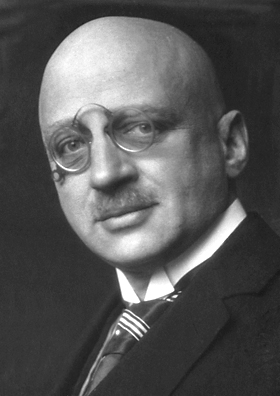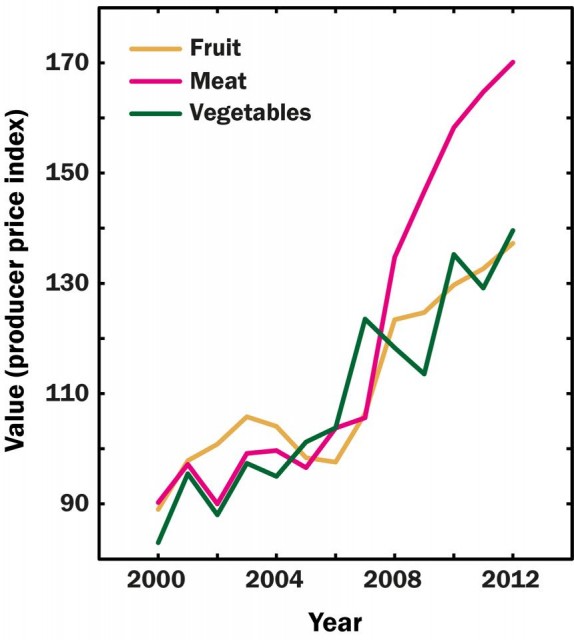Mary Shelley’s Haber-Bosch Process

With the population ever-growing and resources strained, how will we feed ourselves in the future?

Perish the thought… Ian Southwell via Flickr ( License )
This was the foreboding question posed by Dr. Haralampos Miras at the University of Glasgow as he shone a spotlight on the Haber-Bosch process – a longstanding and invaluable industrial technique for producing ammonia – as part of the recent Glasgow Science Festival.
Ever since the first forest garden 1 of prehistoric times, human beings have relied on agriculture of some sort to survive and nitrogen (N) has long been known as vital for crop growth. Frustratingly, for a long time scientists were also well aware that it made up the majority of our atmosphere but were unable to harness (“fix”) it in the same way plants did.
It wasn’t until 1909 that a German chemist named Fritz Haber successfully fixed atmospheric nitrogen in his lab. In synthesizing ammonia using atmospheric nitrogen, he paved the way for an industrial-scale process that changed the world as we knew it and continues to be used to this day.

Until then, his fabulous spectacles remained the pinnacle of human ingenuity Unknown via Wikicommons ( License )
The ‘fixing’ of nitrogen involves changing the atmospheric N2 form – rendered biologically unavailable due to its incredibly strong N-N triple bond – to some bioavailable form which can be used to fertilise crops.
Haber’s Nobel Prize winning lab-based approach demonstrated the ability to take hydrogen from electrolysed (split using electricity) water and combine it with atmospheric nitrogen to produce ammonia. Crops can then use this ammonia to create nitrates for growth.
N2(g) + 3 H2 (g) ↔ 2 NH3(g)
Given the beautiful simplicity of the equation above, you could be forgiven for underestimating the significance of this discovery. However, the global importance of the Haber process simply cannot be overstated. Bar some improvements made over the years, it has remained largely unchanged since its inception in the early 20th century and accounts for more than 99% of our entire synthetic ammonia supply.
The key to industrialising this process was an understanding of equilibrium. Left in a closed system, the Haber process would be a constant battle between ammonia being made and being broken down; but if reactants were continuously introduced into the system and everything was put under pressure, then the reaction could be driven towards ammonia production. Once this was understood by a chemist and engineer working for chemical giants BASF named Carl Bosch (hence it is often called the Haber-Bosch process) not five years after Haber’s discovery, mass production of ammonia gave way to huge agricultural intensification. This served as the detonator of the population explosion, quadrupling the efficiency of our agricultural lands and rocketing the global population from around 1.6 billion to today’s 7 billion people.
However, this discovery carried unforeseen consequences and the monstrous shadow cast by the resulting population boom now looms over us, threatening our continued survival. As Dr. Miras explains, this can clearly be seen in the notable hike in food prices over the past few years, which has left developing countries strained for resources as the cost of importing food becomes unaffordable.

UK food price index data obtained from www.FAO.org – Play around with the data here ( License ). Image Credit: Yulia Revina, for Barry Robertson.
It might seem that the most obvious solution to this problem would be to simply turn the ol’ Haber-Boschinators up to 11 and use some more of that land we have spare. Alas, as with most scientific endeavours, the answer is not so simple. An industrial-scale Haber-Bosch process requires expensive catalysts, high pressures, temperatures between 300-550°C and several cycles to achieve a good yield, leaving it somewhat lacking in efficiency. This, alongside the vast amounts of CO2 produced and the dependency of the process upon natural gas as a starting material, makes it far from a permanent solution.
We have shifted the equilibrium of life here on Earth to the point where we can no longer sustain our growth by conventional means and, once again, we must turn to the scientists to put it right.
As we now all know, nitrogen is abundantly available in our air but the hydrogen source isn’t quite as handy. Haber electrolysed water in his initial lab-based experiments but industry today uses natural gas, a finite resource. Why? Because it’s cheap. Cheaper than industrial-scale water electrolysis at least, but much work is now being done in the field of sustainable hydrogen production.
The electrolysis of water into its individual constituents on an industrial scale can and indeed has been achieved in relatively recent years. Our Nordic friends in Iceland and Norway have been producing hydrogen this way to great success, using surplus energy from their hydroelectric plants to generate thousands of tonnes of hydrogen for ammonia production. Furthermore, there remains great potential for these countries to utilise their uniquely high levels of geothermal energy for endeavours other than relaxing naked outside. Given that around 90% of the cost of ammonia results from the energy required to produce it, a readily available and plentiful energy source such as this would indeed be invaluable to the world.
Sadly, recreating the success of these small, unique countries on a global scale remains a dream; one which the scientists at Imperial College London (ICL) believe to be worth chasing. One of several Grand Challenges, ICL aim to develop novel methods and materials capable of generating hydrogen using the most plentiful and renewable energy source we have: solar power. The £4.2M project will span five years with the hope of exploiting natural processes capable of generating hydrogen at low temperatures and storing it with the aid of fuel cell and hydrogen storage technologies.
This solar hydrogen production and storage project branches (sorry) from ICL’s Artificial Leaf Project, which aims to use CO2 and water to create fuel by utilising the power of the sun. In a single hour, the Sun provides Earth’s surface with the same amount of energy that we consume in an entire year but the energy is far too diffuse to harness it efficiently. To do so would require an enormous surface area and, as of yet, we just can’t facilitate this. This is what separates a source of fuel from a source of energy. Fuels (coal/oil/gas) can be readily stored and used when needed, whereas with energy, the old adage “If you don’t use it, you lose it” becomes all the more true.
The challenges and, thus, the strategies employed to produce and store energy from the sun are manifold but ICL’s approach is perhaps the most true-to-nature. The Artificial Leaf (AL), as you may have guessed, is a conceptual material which can do all of the surface chemistry required to harvest and store energy from the sun in the same way a real leaf does. It must also be robust enough to do so with minimal need for replacement or maintenance – people simply won’t invest in these technologies if they have to climb up on their roof and replace their AL every half hour.

“Technically, this IS what we asked for but…” Istvan via Flickr ( License )
The mimicry of a plant’s natural photocatalytic ability to produce energy for hydrogen for ammonia for more plants is an altogether poetic idea. However, at present, efficiency rates for these materials are low and resources like natural gas are still in favour. We can store them and use them as we please whereas efficiently storing electricity produced from solar energy remains a puzzle which, if solved, could provide us with a means of generating fuel and fertilizer from water and air.
Bringing the presentation to a close, Dr. Miras beautifully – if unintentionally – illustrated the sisyphean nature of the task at hand for scientists such as himself with an attempt to show just how much energy could be gained from a single glassful of water. To do this, a simple classroom recreation of Haber’s groundbreaking experiment had sat tantalisingly at the front of the room for the duration of the talk. With the sense of impending doom that clung to the lecture theatre following the slideshow, a reminder of what was possible through scientific endeavour was just what this (potential) doctor ordered. And it wouldn’t start. After several attempts.
It seems that the monster we created in the early 1900s is now at our backs and threatens to be our undoing. Only with knowledge, enthusiasm and determination can we placate it and, more and more, we are turning to the very nature we defied in the beginning for answers. Time will surely tell if we get them.
For more on Dr. Miras’ work check the Cronin Group’s website.
Specialist edited by James Burgon and copy edited by Charlie Stamenova.










